Click on the links below to jump to that specific pest or predator:
Coyote Control || Wild Boars || Clubroot || Beaver Dams || Mountain Pine Beetle || Grasshoppers || Blackleg of Canola
_
Coyote Control
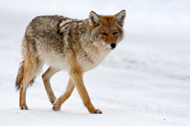
In terms of Predator Control, coyotes fall within the county jurisdiction. Our program runs in conjunction with Alberta Agriculture Predator Control.
Coyote Control Policy | Coyote Control Procedure
_
Wild Boars
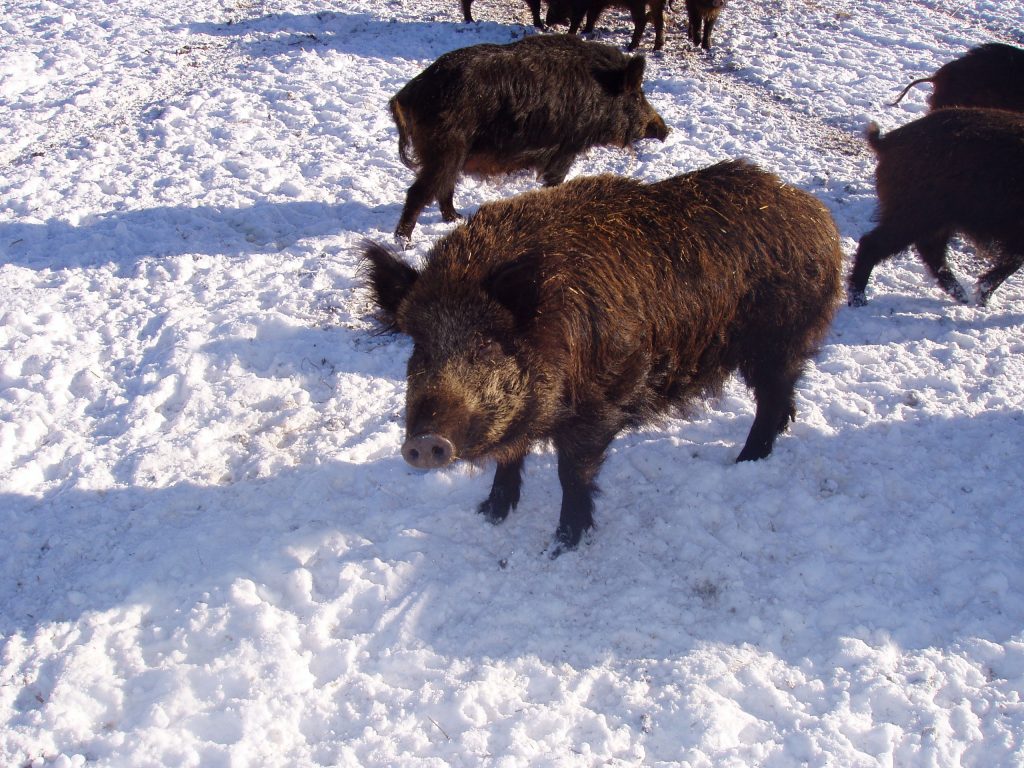
Wild Boars (Sus scrofa) are considered a pest when at large in Alberta. Raising wild boars or starting a wild boar farm in Yellowhead County is not allowed, as wild boars are prohibited animals under Yellowhead County’s Animal Control Bylaw. For more information on wild boars please visit Alberta Agriculture’s website or the AB Invasive Species website.
-
Wild Boar Identification Tips (Click Here)
- Purebred wild boars have a coat of long bristly hairs thickening into a mane on the shoulders and neck.
- Thick, dark brown to black hair coat. Coarse hairs on the mane and head is creamy or silver-tipped.
- The tail hangs straight, not curled.
- Eurasian wild boars have longer legs, larger heads and longer snouts than feral/domestic hogs.
- Larger head to body ration than domesticated varieties.
- The ears are hairy and erect or upright, not floppy.
- Humps on shoulders and back sometimes evident.
- Males have four canine teeth (tusks) used for defence and to establish dominance.
_
Beaver Dams
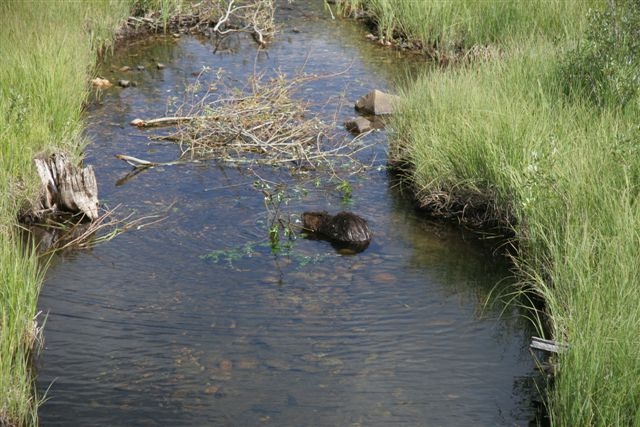
As the beaver is not a declared pest under the Agricultural Pest Act of Alberta, the County will only undertake the removal of beaver/dams to protect the integrity of the County road system. You can review the Yellowhead County Beaver Control Policy here.
_
Clubroot
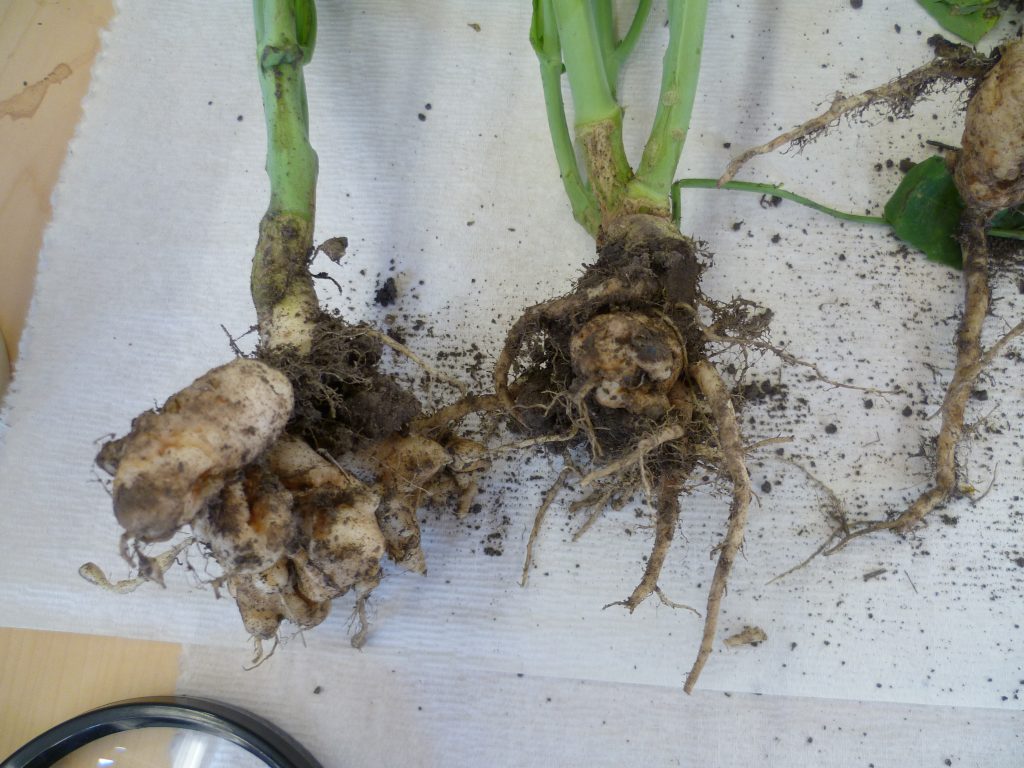
Clubroot is a soil-borne disease that reduces yields of cruciferous crops such as canola, mustards and some vegetables. The disease causes galls or clubs to form on the root systems of infected plants which then restricts the nutrient and water uptake of the plants reducing the yields of crops.
The higher rate of the infection of clubroot in the soil, the more severe the yield loss in the crop.
-
Clubroot Policy, Facts & Links (Click Here)
The primary way this disease spreads is by soil movement from infected fields to non-infected fields. This may be done by soil falling off of farm machinery, vehicles, and off-highway vehicles. It may also be spread by wind and water erosion. Equipment sanitation is essential to preventing the establishment of clubroot.
Rotation of crops is highly recommended to prevent the severity of clubroot in one’s fields. Continuous cropping of canola may increase the likelihood and severity of infection. There are no treatments currently available for clubroot infected fields/plants so prevention practices are highly recommended. Some things you can do to prevent the establishment of clubroot as:
• Check fields regularly and look for abnormalities such as galls and/or clubs on roots, premature ripening and/or wilting plants
• Sanitize machinery, vehicles and equipment before moving into a new area with a solution of 1% bleach and 99% water
• Use clubroot resistant varieties of seed for planting
Yellowhead County Clubroot Policy
For more information please see:
_
Mountain Pine Beetles – What Can You Do?
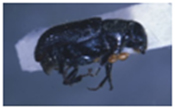
Yellowhead County Residents play an important role in managing the mountain pine beetle infestation. Early detection and control is critical in managing Alberta’s MPB infestations and preventing further spread.
-
Mountain Pine Beetle Info (Click Here)
Background:
Mountain Pine Beetle (MPB) is an insect with the potential to devastate landscapes. A large MPB outbreak started in British Columbia in the early 1990s. Since that time the insect has killed about 50% of the total volume of commercial lodgepole pine in that province. While isolated records of MPB had been noted in Alberta before, it was the massive migration of beetles into Alberta from outbreaks in British Columbia in 2006 that has since fueled the spread in this province.
Learn more about Mountain Pine Beetles from the Province of Alberta here.
Mountain pine beetles in your backyard?
The mountain pine beetle is a small, black beetle about the size of a grain of rice. Over the past few years, mountain pine beetles have been expanding east into Alberta from British Columbia.
What type of trees may be attacked?
Mountain pine beetles attack and kill pine trees, usually mature ones aged 80 to 120 years old. All species of pine including lodgepole, jack pine, Scots pine and ponderosa pine are vulnerable. They do not attack aspen, spruce or fir trees. Pine can be distinguished from other trees by their long needles attached to branches in groups of 2-5.
When do beetles attack trees and how long do they stay in trees?
Beetles fly in search of new trees in July and August. Once a beetle has found a suitable tree, it will live in that tree for the remainder of its life and lay eggs. The new generation of beetles will not emerge from the tree for at least one year.
If my tree is attacked, will it die?
Unfortunately, yes. Trees successfully attacked by mountain pine beetles usually die within one year.
How can I tell if my trees have been attacked?
Look for creamy globs that look like crystalized honey, called pitch tubes, and sawdust at the base of the tree and in the bark’s crevices.
What do I do if my tree is infested?
If you suspect a Mountain Pine Beetle infestation on your property, please contact the Yellowhead Agriculture Department in Wildwood for assistance at 1‐800‐814‐3935.
If you are planting trees due to damage from Mountain Pine Beetle infestation, the following grant may be available:
Operation ReLeaf
Mountain Pine Beetle Surveys and Control
Mountain Pine Beetle Surveys are conducted on pine trees within Yellowhead County during the month of April and May. Survey crews will require access to private property to conduct surveys and will be able to provide identification upon request.
Funding for the program was provided by the Alberta Agriculture and Forestry through a Mountain Pine Beetle Control Program Grant.
Mountain Pine Beetle Surveys are conducted on pine trees within Yellowhead County this spring. Survey crews will require access to private property to conduct surveys and will be able to provide identification upon request.
Follow up control activities will be conducted throughout the spring until completed. Control activities will remove 100% of mountain pine beetles found through surveys. Control activities will consist of tree removal or removal of beetles from the trees. Only trees that meet current infestation standards set out by Alberta Agriculture and Forestry will be removed.
-
Beetle Block Verbenone FAQ (Click Here)
Yellowhead County’s Agricultural Services Department is now selling Beetle Block Verbenone to residents looking to combat Mountain Pine Beetle. Sales occur each year between May and June. More information
For an official Alberta Agriculture Verbenone user guide, please click here.
How does it work?
Mountain pine beetles and many other insects communicate using pheromones. Verbenone is a synthetic pheromone treatment for high-value pine trees that replicates the beetle pheromone, sending a message that the tree is full and that the food supply is insufficient for additional beetles. Arriving beetles receive the “verbenone message” that they should look elsewhere for a suitable host.
Is Verbenone actually effective?
Verbenone has been used as part of integrated pest management programs (IPMs) for more than a decade. Many studies show that areas treated with verbenone as part of an IPM program fare significantly better than those that are not treated against mountain pine. However, Verbenone has shown to be most effective at low to moderate beetle population pressure and is not very effective when the pressure is high.
If protection is not guaranteed, is purchasing Verbenone really worth it?
That depends on the value of the tree to YOU. Since Verbenone has been most effectively used to protect hi-valued trees over a relatively small area consider only using it on trees that have a significant worth to you. Whether that be a privacy tree that blocks your house from the roadway, or a tree with sentimental value that you planted with a loved one etc.
My tree is already showing signs of a beetle attack, will Verbenone save it?
No. Pheromones are only effective in preventing beetle attacks; they cannot save a tree after it has been attacked.
Do I have to store my Verbenone in the Freezer?
Yes. If you do not plan on installing your Verbenone right away you should store the pouch in your freezer. Temperatures above zero degrees Celsius will activate the Verbenone and it will begin to release from the pouch, you do not want this occurring until it is attached to the tree to make the product last as long as possible.
Will I need to buy a new Verbenone pouch for my tree every year?
Yes. Verbenone has a limited life span. Once a pouch is installed it is activated by the ambient temperature and verbenone is slowly released.
_
Grasshoppers
There are more than 80 species of grasshoppers in the Canadian Prairies. Not all of them are pest species. In fact, only about 10 grasshopper species cause problems for agricultural producers. Most of the damage to crops and forages is caused by only six of these species.
Yellowhead County assists Alberta Agriculture with yearly grasshopper surveys. The data from these surveys is used to create the Province of Alberta’s grasshopper forecast maps.

To view the forecast maps, go to www.alberta.ca/grasshopper-forecast.aspx
_
Blackleg of Canola
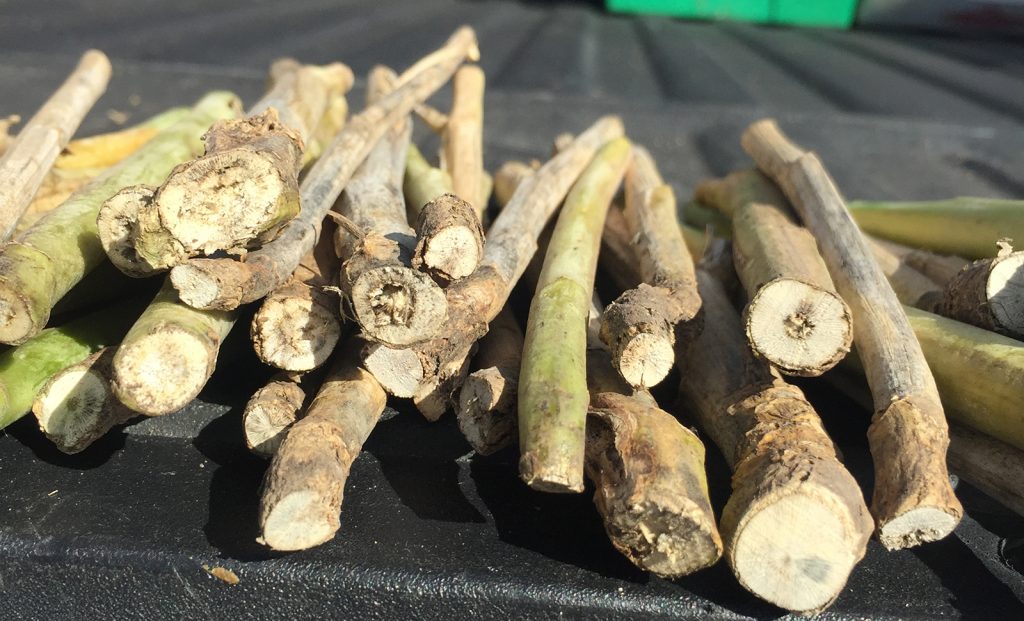
Blackleg of Canola [Image Courtesy of Gov. of AB]
Blackleg of Canola has been making a comeback in Alberta over recent years. The disease was once a big problem in Western Canada 20 to 30 years ago and became less of a problem once resistant cultivars were developed. Recently however with producers using little to no crop rotations, blackleg has been able to make its comeback.
Blackleg is a disease of the cabbage family and occurs on crops such as mustard and canola. It is caused by two species of fungi. One species, Leptosphaeria biglobosa, causes mild infections that do not lead to significant economic losses however the second species, Leptosphaeria maculans, is of great concern. Leptosphaeria maculans, is a highly virulent, or aggressive, pathogen of canola that can cause serious yield losses in susceptible canola crops. It infects canola seedlings early in the season and colonizes plants through the summer, eventually causing a dry rot at the base of the stem that cuts off water and nutrient flows. The diseased plants ripen prematurely, have reduced seed yield and may even be killed.
Taking time to carefully develop a blackleg management plan is important for canola producers because of the explosive nature of the disease and the serious economic losses that could result from a severe outbreak.
For information on developing a blackleg management plan or for more information on blackleg in general please visit:
https://www.alberta.ca/blackleg-of-canola-pest.aspx
www.canolacouncil.org/canola-watch/topics/diseases/blackleg/
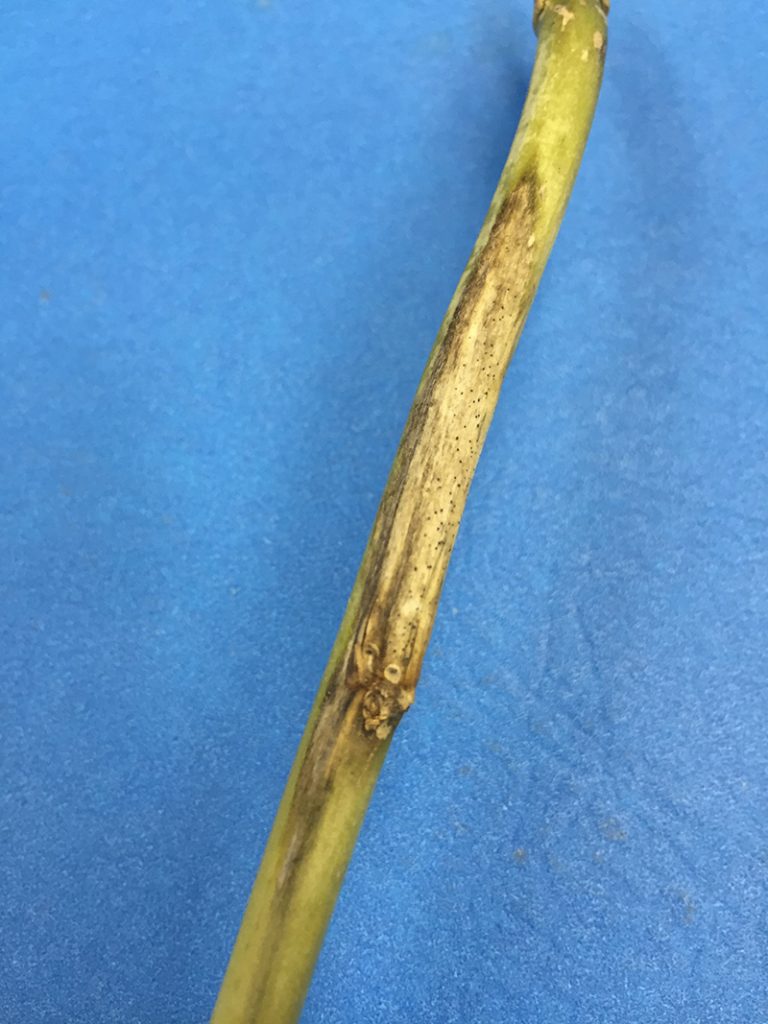
Blackleg of Canola [Image Courtesy of Gov. of AB]

